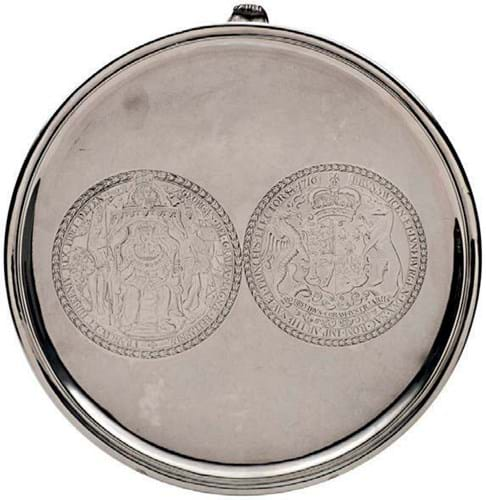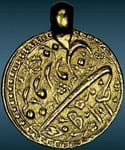Typically they were then given to the last holder of high office – a considerable perk as many were made with 20-plus ounces of silver bullion.
It became the custom by the 17th century for the recipient to commission leading silversmiths of the day to turn the defaced seal into a piece of plate incorporating an engraved version of the original seal. The most famous of these is the salver featuring the Second Exchequer seal of George I made by Paul de Lamerie for Robert Walpole in 1728, now in the V&A Museum.
This 29oz, 12in (30cm) George I Irish salver offered for sale at Bearnes Hampton & Littlewood in Exeter on January 21 with an estimate of just £300-500, appears to be another survivor.
It had been in the same family for at least three generations but had no earlier history. Engraved with the royal coat of arms and the obverse of the great seal of George I, it is struck with marks for Dublin 1727 but bears no maker’s mark.
Plate Committee
As it had been later converted from a tazza and new scroll feet added, specialist Martin McIlroy informed the vendor that it could not be legally sold without evaluation by the Antique Plate Committee at Goldsmiths’ Hall.
The committee decided that the Irish marks could stay but the feet should be struck with London Assay Office marks for 2019. The latter may have reduced its commercial appeal but not by too much: it sold to a UK private collector at £9400 (plus 23% buyer’s premium), some 19 times the pre-sale guide.















